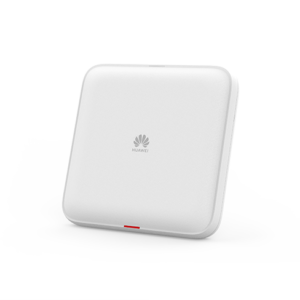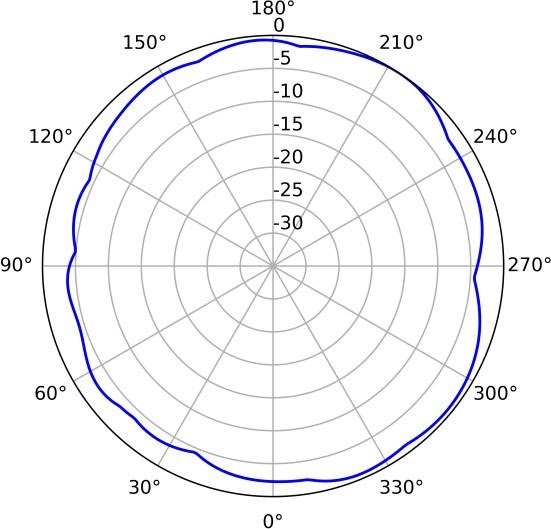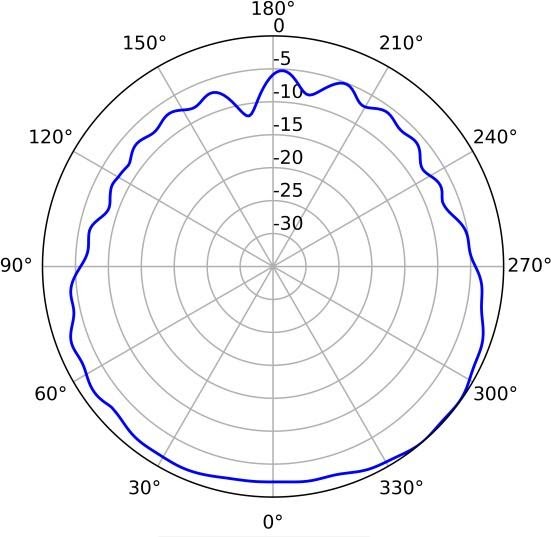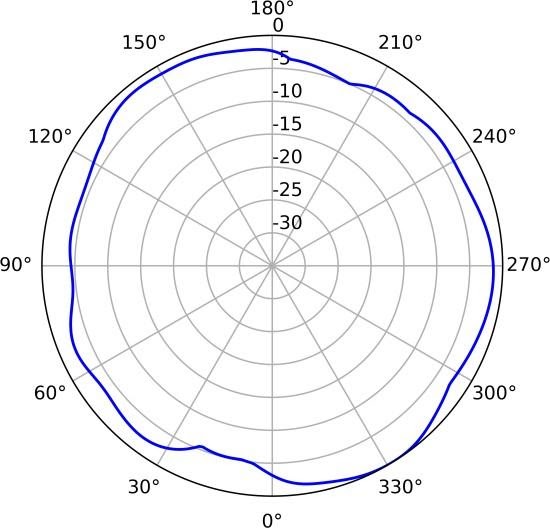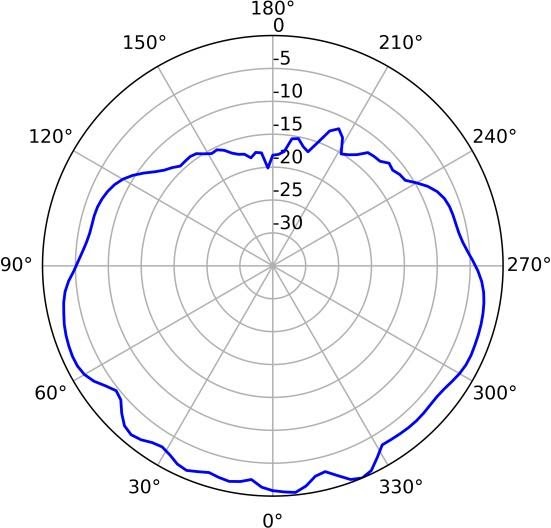Huawei AirEngine 5760-51 Access
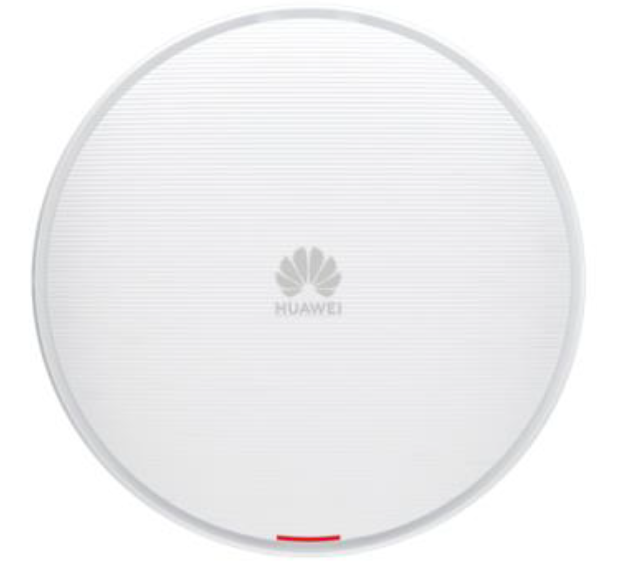

Product Overview
AirEngine 5760-51 is a Wi-Fi 6 (802.11ax) standard wireless access point (AP) released by Huawei. AirEngine 5760-51 supports flexible switching between dual-radio and triple-radio modes to serve different customers and traffic types. The device can reach a rate of up to 5.37 Gbps, after loading the RTU license, the device can reach a rate of up to 5.95 Gbps. AirEngine 5760-51 has built-in smart antennas to move Wi-Fi signals with users, significantly enhancing users’ wireless network experience. These strengths make AirEngine 5760-51 ideal for scenarios such as enterprise offices, cafes, and leisure centers.
- Smart antenna array technology enables targeted signal coverage for mobile terminals, reduces interferences, and improves signal quality. Additionally, it implements millisecond-level switchover as STAs move.
- USB interface can be used for external power supply, external IoT expansion, and storage.
- Built-in IoT module, supporting IoT expansion such as BLE 5.0, ZigBee, RFID, and Thread
- Supports Bluetooth serial interface-based O&M through built-in Bluetooth and CloudCampus APP, and precise locating of Bluetooth terminals by collaborating with location server.
- Supports the Fat, Fit, and cloud three working modes.
Basic capabilities:
- Supports dual radios: 2.4GHz (2×2) + 5GHz (4×4), triple radios: 2.4GHz (2×2) + 5GHz (2×2) + 5GHz (2×2).
- These modes can be flexibly switched. The maximum rate is up to 574 Mbps at 2.4GHz band, 4.8 Gbps at 5GHz band, and 5.37 Gbps for the device.
RTU license upgrade:
- Supports dual radios: 2.4GHz (4×4) + 5GHz (4×4), dual radios: 2.4GHz (2×2)+5GHz (4×4)+ independent radio scanning mode, triple radios: 2.4GHz (2×2) + 5GHz (2×2) + 5GHz (4×4).
- Independent radio scanning, achieving real-time detection of interference and rogue devices in real time and timely network optimization
- These modes can be flexibly switched. The maximum rate is up to 1.15 Gbps at 2.4GHz band, 4.8 Gbps at 5GHz band, and 5.95 Gbps for the device.
- 5GE electrical port compatible with 100M/1000M/2.5GE.
- GE electrical port can compatible with 10/100/1000M.
- The basic mode refers to the capabilities supported in the default state.
- The RTU (Right to Use) mode refers to adding more spatial streams and features to the basic mode.
Feature Descriptions
Wi-Fi 6 (802.11ax) standard
- As the latest generation Wi-Fi standards of IEEE 802.11, 802.11ax improves user experience in high-density access scenarios and supports 2.4 GHz and 5 GHz frequency bands.
- UL/DL MU-MIMO on both the 2.4 GHz and 5 GHz frequency bands, allowing an AP to transmit data to and receive data from multiple STAs simultaneously and multiplying the utilization of radio spectrum resources
- 1024QAM modulation, improving data transmission efficiency by 25% compared with 802.11ac (256QAM).
- UL/DL OFDMA scheduling enables multiple users to receive and send information at the same time, reducing latency and improving network efficiency.
- Spatial reuse (SR) technology uses basic service set (BSS) coloring to enable APs and STAs to distinguish BSSs, minimizing co-channel interference.
- The target wake time (TWT)* allows APs and STAs to negotiate the sleep and wake time with each other, thereby improving the battery life of the STAs.
Note: This function can be implemented through software upgrades.
UL/DL MU-MIMO
UL/DL MU-MIMO technology enables an AP to send data to multiple STAs simultaneously, which doubles the radio spectrum resource usage, increases the number of access users and bandwidth, and improves user experience in high-density access scenarios.
Smart antenna array technology
The AP equipped with the dual-band smart antenna array and intelligent switchover algorithm can intelligently detect the application environment and access density, achieving more accurate signal coverage and interference suppression. This design helps provide the optimal signal coverage direction and signal quality for each mobile access STA, bringing seamless and smooth wireless network access experience to the users.
High-speed access
- The AP supports 160 MHz frequency bandwidth, which increases the number of available data subcarriers, expands transmission channels. In addition, the AP uses 1024QAM modulation and MU-MIMO to achieve a rate of up to 4.8 Gbps on the 5 GHz band and 5.37Gbps for the device.
High Density Boost technology
Huawei uses the following technologies to address challenges in high-density scenarios, including access problems, data congestion, and poor roaming experience:
SmartRadio for air interface optimization
- Load balancing during smart roaming: The load balancing algorithm can work during smart roaming for load balancing detection among APs on the network after STA roaming to adjust the STA load on each AP, improving network stability.
- Intelligent DFA technology: The dynamic frequency assignment (DFA) algorithm is used to automatically detect adjacent- channel and co-channel interference, and identify any 2.4 GHz redundant radio. Through automatic inter-AP negotiation, the redundant radio is automatically switched to another mode (dual-5G AP models support 2.4G-to-5G switchover) or is disabled to reduce 2.4 GHz co-channel interference and increase the system capacity.
- Intelligent conflict optimization technology: The dynamic enhanced distributed channel access (EDCA) and airtime scheduling algorithms are used to schedule the channel occupation time and service priority of each user. This ensures that each user is assigned relatively equal time for using channel resources and user services are scheduled in an orderly manner, improving service processing efficiency and user experience.
Air interface performance optimization
- In high-density scenarios where many users access the network, increased number of low-rate STAs consumes more resources on the air interface, reduces the AP capacity, and lowers user experience. Therefore, Huawei APs will check the
signal strength of STAs during access and rejects access from weak-signal STAs. At the same time, the APs monitor the rate of online STAs in real time and forcibly disconnect low-rate STAs so that the STAs can reassociate with APs that have stronger signals. The terminal access control technology can increase air interface use efficiency and allow access from more users.
5GHz-prior access (band steering)
- The APs support both 2.4G and 5G frequency bands. The 5GHz-prior access function enables an AP to steer STAs to the
5 GHz frequency band first, which reduces load and interference on the 2.4 GHz frequency band, improving the user experience.
Wired and wireless dual security guarantee
To ensure data security, Huawei APs integrate wired and wireless security measures and provide comprehensive security protection.
Authentication and encryption for wireless access
- The APs support WEP, WPA/WPA2-PSK, WPA3-SAE*, WPA/WPA2-PPSK, WPA/WPA2/WPA3*-802.1x, and WAPI authentication/encryption modes to ensure security of the wireless network. The authentication mechanism is used to authenticate user identities so that only authorized users can access network resources. The encryption mechanism is used to encrypt data transmitted over wireless links to ensure that the data can only be received and parsed by expected users.
Note: This function can be implemented through software upgrades.
Analysis on non-Wi-Fi interference sources
- Huawei APs can analyze the spectrum of non-Wi-Fi interference sources and identify them, including baby monitors, Bluetooth devices, digital cordless phones (at 2.4 GHz frequency band only), wireless audio transmitters (at both the 2.4 GHz and 5 GHz frequency bands), wireless game controllers, and microwave ovens. Coupled with Huawei NCE-Campus, the precise locations of the interference sources can be detected, and the spectrum of them displayed, enabling the administrator to remove the interference in a timely manner.
Rogue device monitoring
- Huawei APs support WIDS/WIPS, and can monitor, identify, defend, counter, and perform refined management on the rogue devices, to provide security guarantees for air interface environment and wireless data transmission.
Wired access authentication and encryption for the AP
- The AP access control ensures validity of APs. The CAPWAP link protection and DTLS/IPsec encryption provide security assurance, improving data transmission security between the AP and the AC.
Automatic radio calibration
- Automatic radio calibration allows an AP to collect signal strength and channel parameters of surrounding APs and generate an AP topology according to the collected data. Based on interference from and loads of authorized APs, rogue APs, and non-Wi-Fi interference sources, each AP automatically adjusts its transmit power and working channel to make the network operate at the optimal performance. In this way, network reliability and user experience are improved.
Automatic application identification
Huawei APs support smart application control technology and can implement visualized control on Layer 4 to Layer 7 applications.
Traffic identification
- Coupled with Huawei WLAN ACs, the APs can identify over 6000 common applications in various office scenarios. Based on the identification results, policy control can be implemented on user services, including priority adjustment, scheduling, blocking, and rate limiting to ensure efficient bandwidth resource use and improve quality of key services.
Traffic statistics collection
- Traffic statistics of each application can be collected globally, by SSID, or by user, enabling the network administrator to know application use status on the network. The network administrator or operator can implement visualized control on service applications on smart terminals to enhance security and ensure effective bandwidth control.
IoT extension
The AP has a built-in IoT module and provides a more stable PCIE port, achieving flexible extension of IoT protocols, such as RFID, ZigBee, BLE, and Thread. This practice helps implement the most comprehensive indoor IoT solution. Therefore, the AP is widely applied in shopping malls, supermarkets, office campuses, classrooms, and industrial IoT scenarios. In addition, the AP has a unique industrial-grade shell. After opening the shell in one-click, you can install an IoT card that is plug-and-play (PnP) with no need to route cables, presenting a pleasant appearance and simplifying O&M.
Leader AP*
The leader AP integrates some WLAN AC functions and can be used to manage Fit APs in small- and medium-sized enterprises and stores, implementing WLAN AC-free access not requiring licenses and saving customer investment.
This function can be implemented through software upgrades.
Cloud-based Management
The AP can be managed via cloud, eliminating the need to deploy a WLAN AC. In cloud-based management mode, abundant authentication functions, such as pre-shared key (PSK) authentication, Portal authentication, SMS authentication, and social media authentication, can be implemented with no authentication server. This mode significantly simplifies the networking and reduces the capital expenditure (CAPEX). In addition, multiple advanced functions, such as online cloud-based network planning, cloud-based deployment, cloud-based inspection, and cloud-based O&M, can be implemented through Huawei cloud management platform. In multi-branch deployment scenarios, cloud APs are pre-configured on the cloud management platform. During onsite network deployment, you only need to power on the cloud APs, connect them to the network ports of switches, and implement plug-and-play (PnP) of the APs by scanning the QR codes. The pre-configurations then are automatically delivered to the APs, significantly shortening the network deployment time. The cloud management platform can monitor the network status, device status, and STA connection status of all sites in a comprehensive and intuitive manner.
Basic Specifications
Fat/Fit AP mode
|
Item |
Description |
|
WLAN features |
Compliance with IEEE 802.11ax and compatibility with IEEE 802.11a/b/g/n/ac/ac Wave 2 Basic capabilities: providing 6 spatial streams, achieving up to 5.37 Gbps throughput RTU license upgrade: providing 8 spatial streams, achieving up to 5.95 Gbps throughput Maximum ratio combining (MRC) Space time block code (STBC) Cyclic Delay Diversity (CDD)/Cyclic Shift Diversity (CSD) Beamforming DL/UL MU-MIMO DL/UL OFDMA Compliance with 1024-QAM and compatibility with 256-QAM/64-QAM/16-QAM/8- QAM/QPSK/BPSK Target wake time (TWT)* NOTE This function can be implemented through software upgrades. Low-density parity-check (LDPC) Frame aggregation, including A-MPDU (Tx/Rx) and A-MSDU (Tx/Rx) 802.11 dynamic frequency selection (DFS) Short guard interval (GI) in 20 MHz, 40 MHz, 80 MHz, and 160 MHz modes Priority mapping and scheduling that are compliant with Wi-Fi multimedia (WMM) to implement |
|
Item |
Description |
|
priority-based data processing and forwarding. Automatic and manual rate adjustment (the rate is adjusted automatically by default) WLAN channel management and channel rate adjustment NOTE For detailed management channels, see the Country Code & Channel Compliance Table. Automatic channel scanning and interference avoidance Service set identifier (SSID) hiding Signal sustain technology (SST) Unscheduled automatic power save delivery (U-APSD) Control and Provisioning of Wireless Access Points (CAPWAP) in Fit AP mode Automatic login in Fit AP mode Extended Service Set (ESS) in Fit AP mode Multi-user CAC Advanced cellular coexistence (ACC), minimizing the impact of interference from cellular networks 802.11k and 802.11v smart roaming 802.11r fast roaming (≤ 50 ms) WAN authentication escape. In local forwarding mode, this function retains the online state of existing STAs and allows access of new STAs when APs are disconnected from an AC, ensuring service continuity. |
|
|
Network features |
Compliance with IEEE 802.3ab Auto-negotiation of the rate and duplex mode and automatic switchover between the Media Dependent Interface (MDI) and Media Dependent Interface Crossover (MDI-X) Compliance with IEEE 802.1q SSID-based VLAN assignment VLAN trunk on uplink Ethernet ports Management channel of the AP uplink port in tagged and untagged mode DHCP client, obtaining IP addresses through DHCP Tunnel data forwarding and direct data forwarding STA isolation in the same VLAN IPV4/IPV6 access control lists (ACLs) Link Layer Discovery Protocol (LLDP) Uninterrupted service forwarding upon CAPWAP channel disconnection in Fit AP mode Unified authentication on the AC in Fit AP mode AC dual-link backup in Fit AP mode Network Address Translation (NAT) in Fat AP mode IPv6 in Fit AP mode Soft Generic Routing Encapsulation (GRE) IPv6 Source Address Validation Improvements (SAVI) Multicast Domain Name Service (mDNS) gateway protocol: supports AirPlay and AirPrint service sharing between users of different VLANs |
|
QoS features |
WMM parameter management for each radio WMM power saving Priority mapping for upstream packets and flow-based mapping for downstream packets Queue mapping and scheduling User-based bandwidth limiting Adaptive bandwidth management (automatic bandwidth adjustment based on the user quantity and |
|
Item |
Description |
|
radio environment) to improve user experience Smart Application Control (SAC) in Fit AP mode Airtime scheduling Application acceleration for VR and mobile gaming Air interface HQoS scheduling Support for Microsoft Lync APIs and high voice call quality through Lync API identification and scheduling |
|
|
Security features |
Open system authentication WEP authentication/encryption using a 64-bit, 128-bit, 152-bit or 192-bit* encryption key WPA2-PSK authentication and encryption (WPA2 personal edition) WPA2-802.1X authentication and encryption (WPA2 enterprise edition) WPA3-SAE authentication and encryption (WPA3 personal edition)* WPA3-802.1X authentication and encryption (WPA3 enterprise edition)* WPA-WPA2 hybrid authentication WPA2-WPA3 hybrid authentication* NOTE This function can be implemented through software upgrades. WPA2-PPSK authentication and encryption in Fit AP mode WAPI authentication and encryption Wireless intrusion detection system (WIDS) and wireless intrusion prevention system (WIPS), including rogue device detection and countermeasure, attack detection and dynamic blacklist, and STA/AP blacklist and whitelist 802.1x authentication, MAC address authentication, and Portal authentication DHCP snooping Dynamic ARP Inspection (DAI) IP Source Guard (IPSG) 802.11w Protected Management Frames (PMFs) |
|
Maintenance features |
Unified management and maintenance on the AC in Fit AP mode Automatic login and configuration loading, and plug-and-play (PnP) in Fit AP mode Batch upgrade in Fit AP mode Telnet STelnet using SSH v2 SFTP using SSH v2 Remote wireless O&M through the Bluetooth console port Web local AP management through HTTP or HTTPS in Fat AP mode Real-time configuration monitoring and fast fault location using the NMS SNMP v1/v2/v3 in Fat AP mode System status alarm Network Time Protocol (NTP) in Fat AP mode |
|
BYOD |
NOTE The AP supports bring your own device (BYOD) only in Fit AP mode. Identifies the device type according to the organizationally unique identifier (OUI) in the MAC address. Identifies the device type according to the user agent (UA) information in an HTTP packet. Identifies the device type according to DHCP options. |
|
Item |
Description |
|
The RADIUS server delivers packet forwarding, security, and QoS policies according to the device type carried in the RADIUS authentication and accounting packets. |
|
|
Location service |
NOTE The AP supports the locating service only in Fit AP mode. Locates Wi-Fi terminals. Working with the location server to locate rogue devices. Supports Bluetooth positioning. |
|
Spectrum analysis |
NOTE The AP supports spectrum analysis only in Fit AP mode. Identification of more than eight interference sources including bluetooth devices, microwave ovens, cordless phones, ZigBee devices, game controllers, 2.4 GHz/5 GHz wireless video and audio devices, and baby monitors Working with the location server to locate interference sources and perform spectrum analysis on them |
Cloud-based management mode
|
Item |
Description |
|
WLAN features |
Compliance with IEEE 802.11ax and compatibility with IEEE 802.11a/b/g/n/ac/ac Wave 2 Basic mode: providing 6 spatial streams, achieving up to 5.37 Gbps for the device RTU mode: providing 8 spatial streams, achieving up to 5.95 Gbps for the device Maximum ratio combining (MRC) Space time block code (STBC) Cyclic Delay Diversity (CDD)/Cyclic Shift Diversity (CSD) Beamforming DL/UL MU-MIMO DL/UL OFDMA Compliance with 1024-QAM and compatibility with 256-QAM/64-QAM/16-QAM/8- QAM/QPSK/BPSK Low-density parity-check (LDPC) Frame aggregation, including A-MPDU (Tx/Rx) and A-MSDU (Tx/Rx) 802.11 dynamic frequency selection (DFS) Short guard interval (GI) in 20 MHz, 40 MHz, 80 MHz, and 160 MHz modes Priority mapping and packet scheduling based on a Wi-Fi Multimedia (WMM) profile to implement priority-based data processing and forwarding WLAN channel management and channel rate adjustment NOTE For detailed management channels, see the Country Code & Channel Compliance Table. Automatic channel scanning and interference avoidance Service set identifier (SSID) hiding Signal sustain technology (SST) Unscheduled automatic power save delivery (U-APSD) Automatic login |
|
Network features |
Compliance with IEEE 802.3ab Auto-negotiation of the rate and duplex mode and automatic switchover between the Media Dependent Interface (MDI) and Media Dependent Interface Crossover (MDI-X) |
|
Item |
Description |
|
Compliance with IEEE 802.1q SSID-based VLAN assignment DHCP client, obtaining IP addresses through DHCP STA isolation in the same VLAN Access control lists (ACLs) Unified authentication on the Agile Controller Network Address Translation (NAT) |
|
|
QoS features |
WMM parameter management for each radio WMM power saving Priority mapping for upstream packets and flow-based mapping for downstream packets Queue mapping and scheduling User-based bandwidth limiting Airtime scheduling |
|
Security features |
Open system authentication WEP authentication/encryption using a 64-bit, 128-bit, 152-bit or 192-bit* encryption key WPA2-PSK authentication and encryption (WPA2 personal edition) WPA2-802.1X authentication and encryption (WPA2 enterprise edition) WPA3-SAE authentication and encryption (WPA3 personal edition)* WPA3-802.1X authentication and encryption (WPA3 enterprise edition)* WPA-WPA2 hybrid authentication WPA2-WPA3 hybrid authentication* NOTE This function can be implemented through software upgrades. 802.1x authentication, MAC address authentication, and Portal authentication DHCP snooping Dynamic ARP Inspection (DAI) IP Source Guard (IPSG) |
|
Maintenance features |
Unified management and maintenance on the Agile Controller Automatic login and configuration loading, and plug-and-play (PnP) Batch upgrade Telnet STelnet using SSH v2 SFTP using SSH v2 Remote wireless O&M through the Bluetooth console port Web local AP management through HTTP or HTTPS Real-time configuration monitoring and fast fault location using the NMS System status alarm Network Time Protocol (NTP) |
Technical Specifications
|
Item |
Description |
||
|
Technical specifications |
Dimensions (Diameter × Hight) |
Φ220*51mm |
|
|
Weight |
1.15kg |
||
|
Interface type |
1 x 5GE + 1 x GE 1 x USB NOTE
|
||
|
Internal IoT module |
Build in IoT slots: Supporting PCIe cards such as ZigBee, RFID, and Thread. |
||
|
Bluetooth |
Build in BLE5.0 |
||
|
LED indicator |
Indicates the power-on, startup, running, alarm, and fault states of the system. |
||
|
Power specifications |
Power input |
|
|
|
PoE power supply mode |
2.4GHz |
5GHz |
Maximum power consumption (excluding USB and IoT) |
|
802.3bt (PoE++) |
4×4(RTU) |
4×4 (RTU) |
<35.5W |
|
2×2(RTU) |
2×2+4×4 (RTU) |
||
|
802.3at(PoE+) |
2×2 |
4×4 |
<25.5W |
|
NOTE For details about the working status of the Ethernet port, IoT, and USB in different power supply modes, see the Specification Query Tool. The actual maximum power consumption depends on local laws and regulations. |
|||
|
Environmental specifications |
Operating temperature |
–10°C to +50°C |
|
|
Storage temperature |
–40°C to +70°C |
||
|
Operating humidity |
5% to 95% (non-condensing) |
||
|
Altitude |
–60 m to +5000 m |
||
|
Atmospheric pressure |
53 kPa to 106 kPa |
||
|
Radio specifications |
Antenna type |
Built-in smart antennas |
|
|
Antenna gain |
5GHz: 5.5dBi NOTE
|
||
|
Maximum number of SSIDs for each radio |
≤ 16 |
||
|
Maximum number of users |
≤ 1024 (dual-radio) ≤ 1152 (triple-radio) |
|
Item |
Description |
|
|
NOTE The actual number of users varies according to the environment. |
||
|
Maximum transmit power |
2.4GHz: 26 dBm (combined power) 5GHz: 26 dBm (combined power) NOTE The actual transmit power depends on local laws and regulations. |
|
|
Power increment |
1 dBm |
|
|
Maximum number of non- overlapping channels |
2.4 GHz (2.412 GHz to 2.472 GHz)
− 20 MHz: 3
− 20 MHz: 3 − 40 MHz: 1
− 20 MHz: 3 − 40 MHz: 1 5 GHz (5.18 GHz to 5.825 GHz)
− 20 MHz: 13
− 20 MHz: 13 − 40 MHz: 6
− 20 MHz: 13 − 40 MHz: 6 − 80 MHz: 3 − 160 MHz: 1
− 20 MHz: 13 − 40 MHz: 6 − 80 MHz: 3 − 160 MHz: 1 NOTE The table uses the number of non-overlapping channels supported by China as an example. The number of non- overlapping channels varies in different countries. For details, see the Country Codes & Channels Compliance |
Standards Compliance
|
Item |
Description |
||
|
Safety |
UL 62368–1 |
GB 4943 |
CAN/CSA 22.2 No.60950-1 |
|
Item |
Description |
||
|
standards |
EN 62368–1 IEC 62368–1 |
EN 60950–1 UL 60950–1 |
IEC 60950–1 |
|
Radio standards |
ETSI EN 300 328 ETSI EN 301 893 |
RSS-210 |
AS/NZS 4268 |
|
EMC standards |
EN 301 489–1 EN 301 489–17 ETSI EN 60601-1-2 FCC Part 15 ICES-003 YD/T 1312.2-2004 |
ITU k.20 GB 9254 GB 17625.1 AS/NZS CISPR22 EN 55022 |
EN 55024 CISPR 22 CISPR 24 IEC61000-4-6 IEC61000-4-2 |
|
IEEE standards |
IEEE 802.11a/b/g IEEE 802.11n IEEE 802.11ac IEEE 802.11ax |
IEEE 802.11h IEEE 802.11d IEEE 802.11e IEEE 802.11k |
IEEE 802.11u IEEE 802.11v IEEE 802.11w IEEE 802.11r |
|
Security standards |
802.11i, Wi-Fi Protected Access 2(WPA2), WPA, WPA3* NOTE This function can be implemented through software upgrades. 802.1X Advanced Encryption Standards(AES), Temporal Key Integrity Protocol(TKIP) EAP Type(s) |
||
|
EMF |
CENELEC EN 62311 CENELEC EN 50385 |
OET65 RSS-102 |
FCC Part1&2 FCC KDB Series |
|
RoHS |
Directive 2002/95/EC & 2011/65/EU |
||
|
Reach |
Regulation 1907/2006/EC |
||
|
WEEE |
Directive 2002/96/EC & 2012/19/EU |
Antennas Pattern
|
|
|
|
2.4GHz (Horizontal) |
2.4GHz (Vertical) |
|
|
|
|
5GHz (Horizontal) |
5GHz (Vertical) |
More Information
For more information about Huawei WLAN products, visit http://e.huawei.comor contact us in the following ways:
- Global service hotline: http://e.huawei.com/en/service-hotline
- Logging in to the Huawei Enterprise technical support web: http://support.huawei.com/enterprise/
- Sending an email to the customer service mailbox: [email protected]
|
Copyright © Huawei Technologies Co., Ltd. 2020. All rights reserved. No part of this document may be reproduced or transmitted in any form or by any means without prior written consent of Huawei Technologies Co., Ltd. Trademarks and Permissions
All other trademarks and trade names mentioned in this document are the property of their respective holders. |
Huawei AirEngine 5760-51 Access Point Datasheet – Huawei AirEngine 5760-51 Access Point Datasheet –
[xyz-ips snippet=”download-snippet”]

